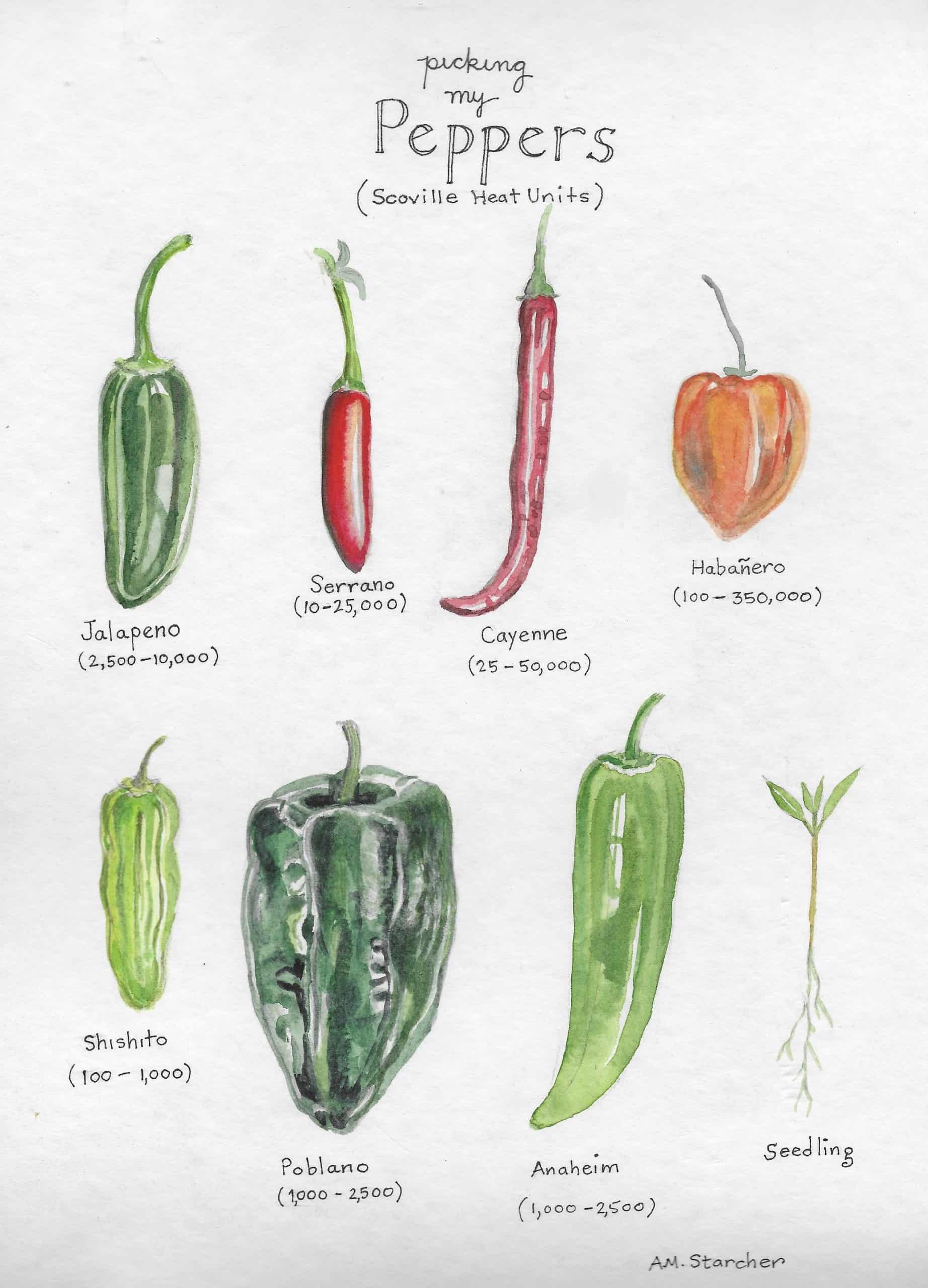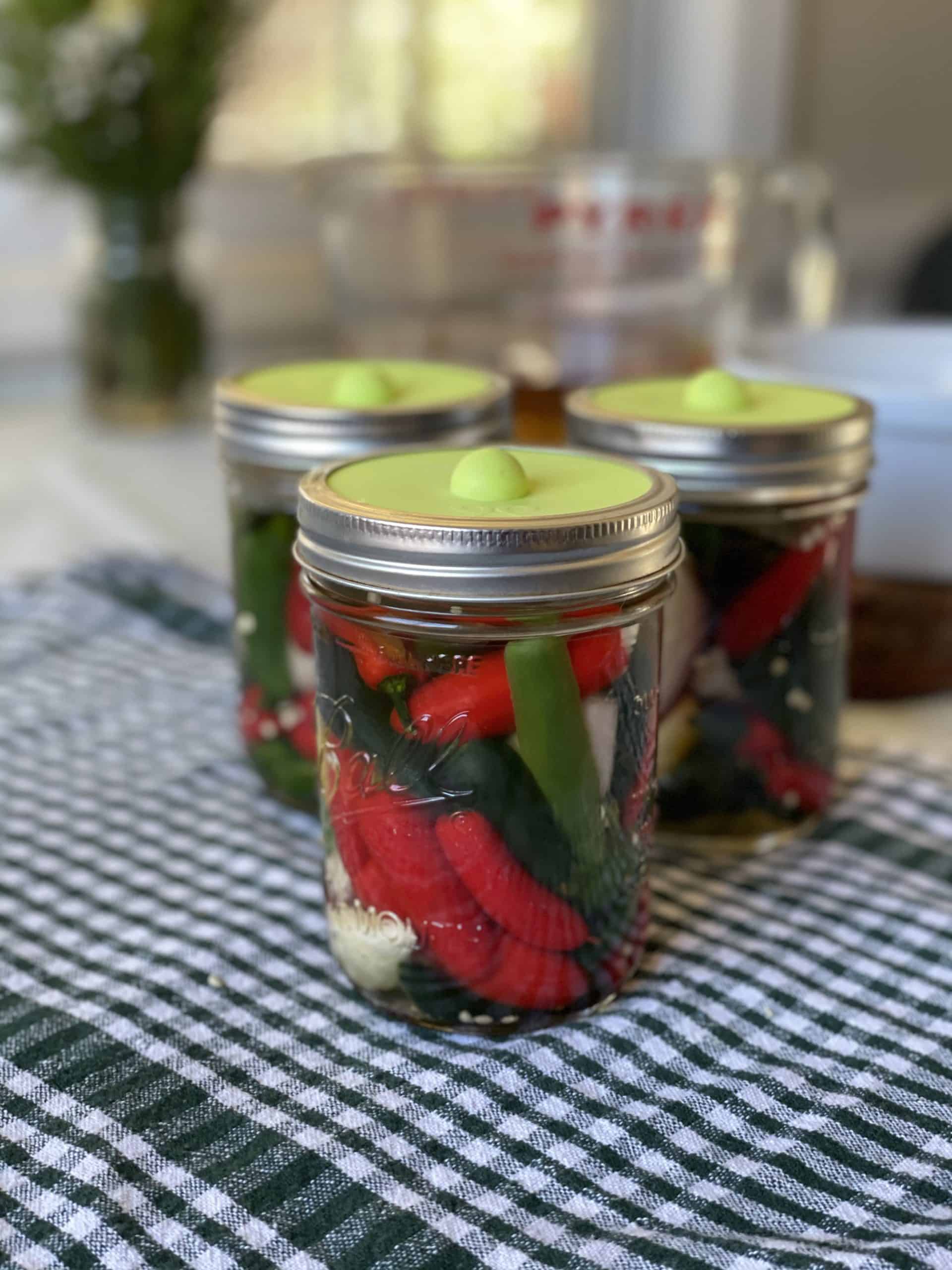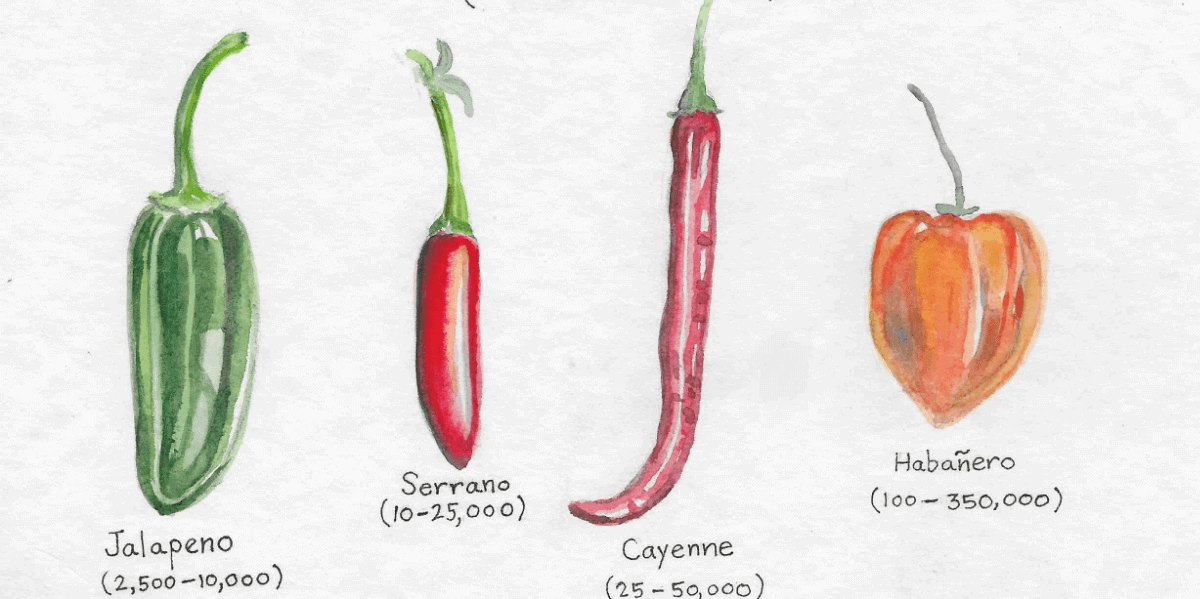With spring just days away, it’s time to start preparing your garden plan for peak planting season. Last year, I had great success growing Serrano and Jalapeño Chiles, and this year I’ve decided to broaden my repertoire. I’m mad about making salsas and hot sauce.
Home-Grown Peppers vs. Commercial
One great advantage of growing your own chilis is that each plant’s peppers will produce a fairly consistent level of heat. When you purchase peppers from the market, you never know what you’ll get.
While my Serranos got progressively hotter as the weather warmed, by the middle of summer, they were predictably spicy, and I could add them to recipes without concern.
Two of my plants are over four feet tall, and I’m still picking peppers a year after propagating them from seeds! It’s so handy to walk out my back door, pick one to spice up everything from avocado toast to tuna salad.
The Scoville Scale for Popular Peppers
This year I’m planting an entire bed with varieties to suit every palate and purpose. Using the Scoville Scale, which rates the heat of most commercially available peppers based on the amount of capsaicin they produce, I have chosen seven types that range from mild Japanese Shishitos at 100–500 units to the diabolical Habanero at 100,000-300,000 units!

Where popular chili peppers rank on the Scoville Scale for heat.
Luckily, all of them grow well under the same conditions. They need a spot that gets full sun for at least 6–8 hours a day, with optimal daytime temperatures between 75–85 degrees. Peppers aren’t too picky about soil but prefer good drainage and consistent deep watering.
They don’t take kindly to wilting or very windy conditions. Since they have shallow root systems, I stake mine once they reach a foot in height. Don’t crowd your plan. I give mine about 12-18″ of space, depending on the type. With most varieties, you can harvest them while they are green or let them mature and turn red.
Pickling & Cuisine

Home-pickled peppers.
This year, I harvested so many Serranos and Jalapeños that I fermented them and was delighted by the resulting complexity and mellowing. I dried the surplus peppers and ground them with lime zest and Himalayan pink salt to make a condiment I sprinkle on everything!
I’ll be reserving my Cayenne and Habaneros for super easy pressure cooker hot sauce, and the Anaheim and Poblanos will be ready to harvest just in time for summer barbecue season. Just blacken them on the grill and toss them in a paper bag to cool. The skins will slip right off, and you can add them sliced to your burgers.
One reminder: when working with some of the hotter chilis, it’s advisable to wear food preparation gloves. The white inner ribs of the peppers are where the majority of the capsaicin lies, so remove it if you want less spice or keep it if you are going for a fiery finish.
Just remember to never rub your eyes after handling them. If you do, you’ll understand why pepper spray is considered a weapon!
FAQs: Picking Peppers
Q: What’s the best time to plant pepper seeds?
Peppers should ideally be planted indoors 8–10 weeks before the last frost date in your area and can be transplanted outdoors once the temperatures consistently reach above 60°F.
Q: How often should I water my pepper plants?
Pepper plants prefer consistent moisture, so they should be watered deeply once a week, ensuring the soil remains moist but not soggy.
Q: How can I tell if my peppers are ready to be harvested?
Peppers are ready to harvest when they reach their full size and have developed their characteristic color (green, red, yellow, etc.), though some varieties can be harvested when still green.
Q: What are the signs of overwatering in pepper plants?
Yellowing leaves, wilting, and root rot are signs of overwatering. If these symptoms appear, ensure good drainage and adjust your watering schedule.
Q: Can I grow peppers in containers?
Yes, as long as containers have proper drainage holes and are large enough (at least 5 gallons) to hold adequate soil and moisture.
Q: What are the best companion plants for peppers?
Tomatoes, basil, and onions are good companions for peppers, as they can enhance growth and deter pests.
Q: How should I store harvested peppers?
Fresh peppers can be stored in the refrigerator for up to a week, while dried peppers should be kept in an airtight container in a cool, dark place.
Q: Are there any pests I should watch out for when growing peppers?
Common pests include aphids, spider mites, and pepper maggots. To manage infestations, regularly inspect your plants and consider using insecticidal soap or natural predators.
Q: How can I increase the heat level of my peppers?
Grow your plants in a stress-free environment with plenty of sunlight. To enhance their heat level, let the peppers fully ripen before harvesting.
Q: Can I save seeds from my home-grown peppers for planting next year?
Yes. Allow your peppers to fully ripen and dry, then extract and store the seeds in a cool, dry place until you’re ready to plant them the following season.

